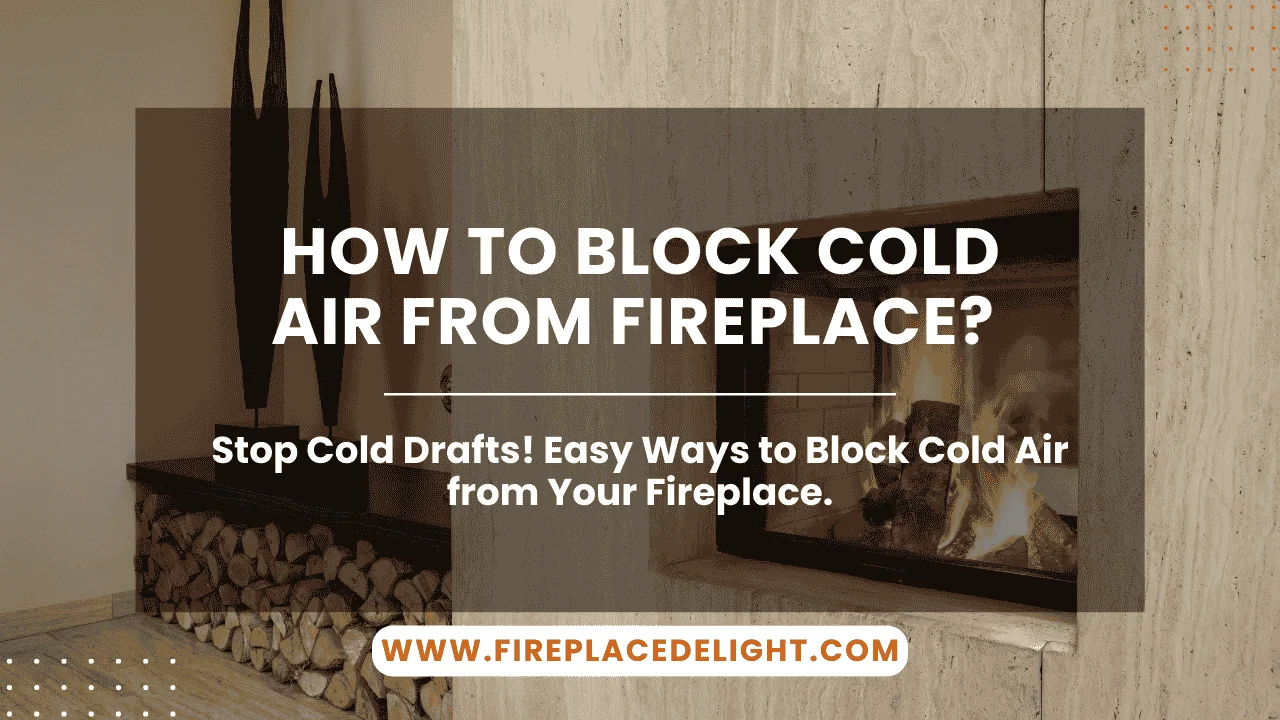A fireplace can be a cozy, comforting feature in your home, especially during the colder months. However, if cold air is entering through your fireplace, it can lead to an uncomfortable living space and higher heating costs. This issue is more common than you might think and can occur in both active and unused fireplaces.
Cold drafts can seep in through gaps in the chimney, an open or faulty damper, or even through the firebox when it’s not properly sealed. Understanding the causes of cold air entering your home is the first step toward addressing the problem. Fortunately, there are several simple and effective solutions to prevent cold air from entering your home through your fireplace.
By taking steps such as properly managing your fireplace damper, using a chimney plug, and installing fireplace doors, you can ensure that your fireplace remains a source of warmth and comfort rather than a drafty nuisance. In this guide, we’ll explore the common causes of cold air drafts and provide practical tips to help you keep your home warm and energy-efficient.
Fireplace and Chimney Basics
Understanding the basic functioning of your fireplace and chimney is crucial when addressing issues like cold air coming from the fireplace. A fireplace works by allowing air to flow through the firebox and chimney, where it is either vented outside or circulated back into the room, depending on the type of fireplace. A well-functioning chimney helps ensure that smoke, gases, and air are efficiently directed out of the home, while also allowing proper airflow for the fire to burn effectively.
Learn More: How To Install A Wood Stove In A Fireplace?
The chimney is designed with a flue, which is a passage that carries smoke and gases out of the home, and a damper, which can be opened or closed to control airflow. If the damper is left open or if there are gaps or leaks in the chimney or fireplace system, cold air can easily enter the room. Additionally, a fireplace that is not properly sealed or has an improperly sized chimney may struggle with airflow, causing cold air to flow down the flue and into the room. Proper chimney maintenance, including sealing gaps, closing the damper when the fireplace is not in use, and having the chimney regularly cleaned and inspected, is essential to preventing cold air from entering your living space.
Ways to Prevent Cold Air Entering Your Home Through Your Fireplace
Cold air entering through your fireplace can be frustrating, especially during the colder months. Fortunately, there are several ways to address and prevent this issue, ensuring your home stays warm and energy-efficient. Here are a few effective solutions:
Fireplace Damper
The fireplace damper plays a critical role in regulating the airflow within your fireplace. When the fireplace is not in use, the damper should be closed to prevent cold air from flowing down the chimney and into your living space. A damper that does not close completely can allow drafts to enter the room, making it colder. If your damper is damaged or malfunctioning, consider replacing it with a newer, more efficient model, such as a top-sealing damper, which creates a tighter seal and helps prevent heat loss and cold air infiltration.
Chimney Plug
A chimney plug is another effective solution for stopping cold air from entering through the fireplace. These plugs are designed to seal the chimney flue when the fireplace is not in use. They are typically made of insulating foam or other materials that expand to create a tight fit. Installing a chimney plug will block cold air from entering your home through the chimney, while also preventing warm air from escaping. Be sure to remove the plug before using the fireplace, as it could obstruct proper venting and airflow during a fire.
Fireplace Doors
Adding fireplace doors is a practical way to reduce drafts and maintain a more stable indoor temperature. Fireplace doors act as a barrier between the room and the chimney, preventing cold air from entering through the firebox when the fireplace is not in use. In addition to blocking drafts, fireplace doors can enhance safety by containing sparks and embers, improving the overall efficiency of the fireplace. Look for doors that fit tightly and are made of durable, heat-resistant materials for maximum effectiveness in sealing off the fireplace.
Read More: What Is A Firebox In A Fireplace
By addressing these key areas sealing the damper, using a chimney plug, and installing fireplace doors you can significantly reduce the amount of cold air entering your home through the fireplace, keeping your space more comfortable and energy-efficient year-round.
Conclusion
Cold air entering through your fireplace can be a significant issue, making your home uncomfortable and less energy-efficient. Fortunately, there are several practical and cost-effective solutions to prevent cold drafts from sneaking in. By ensuring that your fireplace damper is properly sealed, using a chimney plug when the fireplace is not in use, and installing fireplace doors, you can effectively block cold air and maintain a more comfortable indoor environment. Regular maintenance and attention to these simple fixes will not only keep your living space warmer but will also improve the overall energy efficiency of your home. Taking these steps will allow you to enjoy the warmth and ambiance of your fireplace without worrying about unwanted drafts.
- 27 Farmhouse Fireplace Ideas That Bring Warmth & Charm - August 18, 2025
- 25 Fireplace Lighting Ideas to Illuminate Your Hearth - August 7, 2025
- How to Replace an Electric Fireplace Switch? - August 5, 2025



